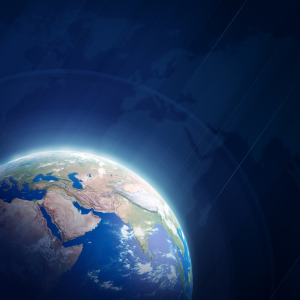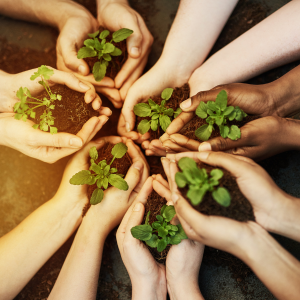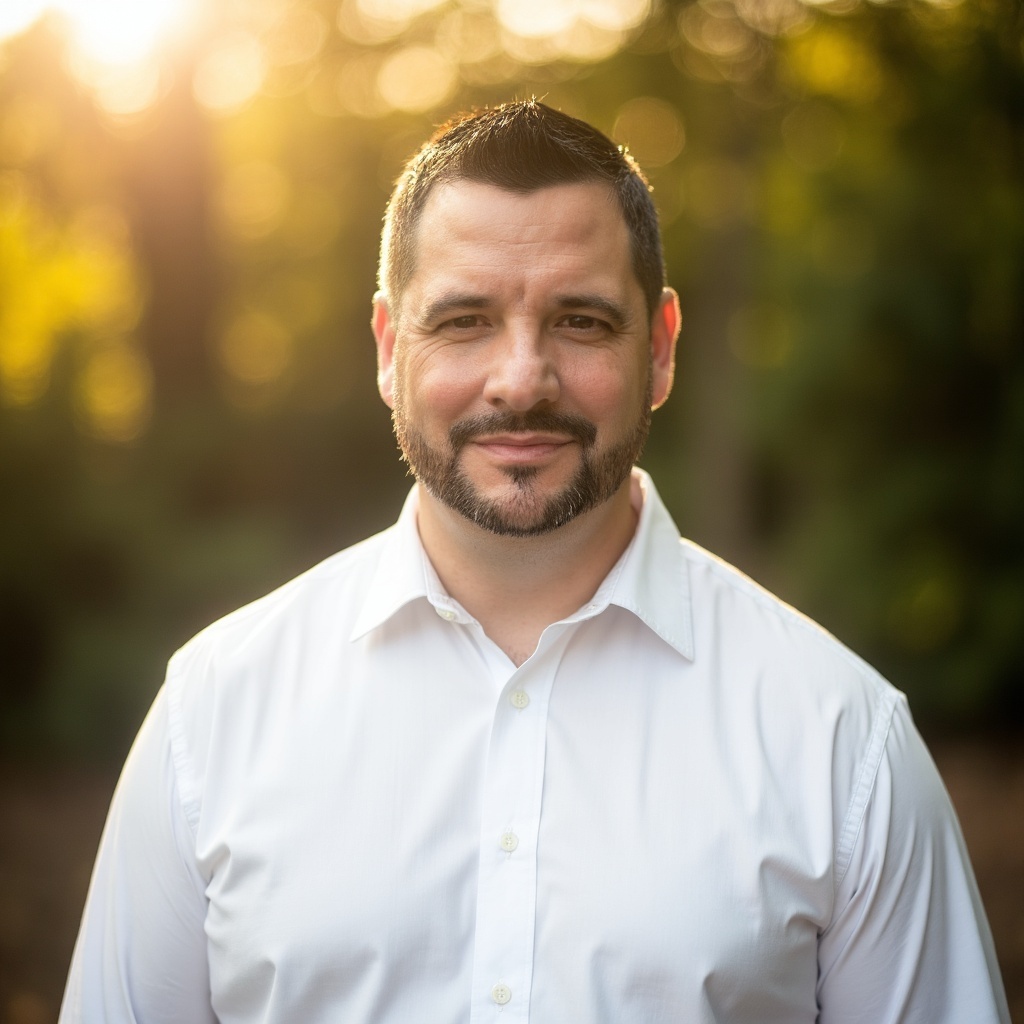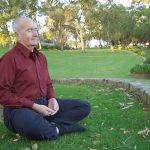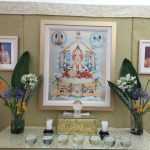Friday
A World Built on Pain: The Call for Healing and Change
By George Cassidy Payne
We live in a world where systems of power and dominance are designed to destroy the very planet that sustains us. These systems, though old in origin, have become more visible than ever before. They are built on extraction, exploitation, and a blind pursuit of progress that disregards the balance of life on Earth. Mother Earth is suffering under the weight of human-made unsustainable practices.
As Thich Nhat Hanh, a renowned teacher of peace and mindfulness, has often said, our connection to the Earth is not some abstract concept but something profound and immediate. To love the Earth is to love ourselves because we are intricately woven into the fabric of life. Yet, despite this deep connection, the structures of our society continue to foster destruction. Economic systems prioritize growth, accumulation, and exploitation, often at the cost of the environment and all of its creatures. The question we must ask is: where does this path lead us? Will our desire for control and comfort continue to erode the very systems upon which we depend?
Civilization, as we know it, is unsustainable. The rise of agriculture over 10,000 years ago marked the beginning of a trajectory where humanity’s relationship with nature became one of domination. We have seen entire species wiped out and ecosystems decimated. Today, 90% of fish populations are depleted, and 80% of old-growth forests have been destroyed. This is the legacy of human progress. We’ve created systems that exploit nature, driven by a desire to conquer and control. But at what cost?
The violence inflicted upon the Earth is not just physical; it’s linguistic and ideological. The discourse surrounding nature and sustainability has been shaped by political and economic forces that treat the natural world as something to be harvested, not a living community to be nurtured. We are not separate from nature; we are part of it. Yet, in our arrogance, we act as though we are above it, consuming without consequence. The truth is clear: without nature, we cease to exist. The buffalo skulls scattered across the Plains are a haunting reminder of what happens when we push too far, too fast, and too greedily.
Our ego has placed itself in direct opposition to the ecological system that sustains all life. The needs of nature must come before the needs of economic systems, but we continue to prioritize growth over balance, and consumption over care. This is a profound injustice — not only to the Earth but to all the creatures that depend on her.
We are dealing with pathological systems — economic, political, and social structures that are broken and destructive by design. These systems perpetuate ecological collapse, social inequality, and environmental degradation. The damage they cause is not an accident; it is the logical outcome of the values that drive them. These are not systems that can be tweaked or reformed; they need to be re-envisioned.
To create a world that is just and sustainable, we must re-imagine power, ecology, and healing. This requires a radical shift — a transformation in how we relate to one another, the Earth, and ourselves.
Reenvisioning Power
Power, as we know it, is often associated with domination, control, and exploitation. We see this in the way political, economic, and social structures perpetuate inequality and environmental harm. These hierarchies place certain groups — usually those with wealth and technological advantage — above others, including the natural world.
True power lies in interconnection, reciprocity, and mutual respect. It arises when we recognize our interconnectedness with all life. Gandhi’s principle of non-cooperation with everything humiliating points us toward an alternative vision of power — one that does not dominate or subjugate but works in harmony with the Earth and one another. Power, in this sense, is not something to be hoarded or controlled. It’s something to be shared, cultivated, and used responsibly for the collective well-being of all.
Reenvisioning Ecology
Ecology, in its current treatment, is often viewed through a narrow lens: nature as something to be exploited, commodified, and used for human gain. We speak of nature as “resources” to be extracted, “capital” to be managed. This extractive relationship has brought us to the brink of ecological collapse — biodiversity loss, deforestation, ocean acidification, and climate change are just a few of the destructive forces at play.
A new ecological vision is required — one that sees nature not as a separate entity to be controlled but as a living, breathing community with which we share space. It’s a worldview that recognizes the sacredness of all life and understands that human flourishing is tied to the health of ecosystems. In this vision, our relationship with the Earth becomes one of stewardship, reciprocity, and respect, grounded in the understanding that the health of the planet directly influences the well-being of all species, including ourselves.
To heal the planet, we must move beyond the extractive model of exploitation and embrace a more holistic, regenerative approach that centers on sustainability, biodiversity, and the restoration of natural cycles.
Reenvisioning Healing
Healing is often seen as a personal journey — a process of mending broken bodies or minds. But true healing extends beyond the individual. It encompasses communities, ecosystems, and the Earth itself. Healing involves confronting the deep wounds caused by centuries of exploitation, oppression, and violence. It requires reconciliation — not just between people but between humanity and the Earth.
Healing begins by acknowledging the trauma caused by our systems — systems that perpetuate environmental destruction, social inequality, and violence. It involves the work of repair, restoration, and regeneration. Just as individuals must heal from their wounds, societies and ecosystems must heal from the violence of extraction, colonization, and environmental degradation.
This process must also be inclusive, recognizing the voices and needs of marginalized communities — whose struggles are often intertwined with the environmental crisis. Communities of color, indigenous peoples, and low-income populations bear the brunt of both social injustice and ecological harm. Their healing is integral to the broader healing of the world.
The Power of Music and Local Action
One of the most powerful tools in this journey toward a nonviolent world is music. Music transcends barriers and speaks directly to the heart. In the fight for social and ecological justice, music serves as a powerful tool for expression, healing, and resistance. We must give voice to those whose stories have been silenced by the dominant narrative of violence and exploitation. Music becomes an act of resistance, a means of resisting the forces that seek to divide us and disconnect us from one another and the Earth.
However, music alone is not enough. We must also recognize the importance of local action. While large-scale movements are necessary, it’s the everyday actions, rooted in communities and local networks, that lay the foundation for lasting transformation. These small, collective actions have the potential to create a ripple effect — a nonviolent contagion that spreads from the grassroots to the global.
Challenging the Myth of Military Effectiveness
One of the most enduring myths that sustain these destructive systems is the myth of military effectiveness — the belief that military power is the ultimate means of achieving peace and security. But the truth is, that violence breeds more violence, and military solutions often exacerbate the very crises they are meant to resolve. Revolution does not always have to be violent. We can challenge this myth by demonstrating alternative forms of power — forms grounded in nonviolence, compassion, and cooperation.
True power, as Hannah Arendt wisely observed, is not violence; it is the ability to act in concert with others toward a common goal. Power lies in collective action, solidarity, and the strength of a community united in nonviolent resistance.
Contemporary Faith-Based Activism
Faith-based activism offers another lens through which to view the transformative potential of nonviolence. Rooted in compassion, justice, and a deep sense of moral responsibility, faith-based movements have often been at the forefront of social change. From the civil rights movement to climate justice, faith communities have played a crucial role in challenging injustice and advocating for a more sustainable world.
As we work to build a nonviolent, sustainable future, we must look to these faith-based activists who are mapping a nonviolent contagion — a global network of compassion, justice, and solidarity. This movement is grounded in the belief that true peace can only be achieved when all beings are respected and honored.
Conclusion
We stand at a critical moment in human history. The systems that govern our lives are broken, and the Earth cries out for healing. The path we take now will determine the future of our planet and all the life it sustains. The time for change is now. But this change must come from within. We must act out of love — for the Earth, for one another, and future generations. Only through radical transformation — grounded in nonviolence, respect for nature, and collective action — will we begin to heal the world and ourselves.
The change we need cannot come from the same systems that created the problem. We must, as Gandhi said, “be the change we wish to see in the world.”
***
George Cassidy Payne is a writer, philosopher, and advocate based in Rochester, NY. His work delves into themes of spirituality, social justice, philosophy, and the human condition. Known for his introspective essays, evocative poetry, and thought-provoking commentary, George contributes to various publications and platforms, offering a distinctive perspective on contemporary issues and timeless questions. He lives and works as a counselor in Irondequoit, NY.
Entries filed under Opinion Pieces
Carta de Lady Diana Mukpo
Queridos miembros de la Comunidad Shambhala: Les escribo con un corazón apesadumbrado. Este es un momento increíblemente doloroso para todos nosotros. Sin embargo, de muchas maneras, siento que la situación en la que nos encontramos como comunidad era inevitable. La profunda disfunción y la falta de amabilidad ... continuePosted February 22, 2019 by luz_rodriguez
Letter from Lady Diana Mukpo – HIGHLIGHT
Dear Members of the Shambhala Community, I write to you today with a very heavy heart. This is an incredibly painful time for all of us. However, in many ways, I feel that the situation we find ourselves in as a community was inevitable. The deep dysfunction ... continuePosted February 19, 2019 by Ashley_Dinges
Sad Farewell – HIGHLIGHT
The Shambhala Times stops bringing you the news by Carol Henderson Two months ago, I was informed that the post I had held for years as Editor of the Shambhala Times was ending due to financial concerns. Shambhala could no longer afford to support its long-time online newsletter, ... continuePosted October 1, 2018 by CGH
Body, Mind, and Universe – HIGHLIGHT
Musings on the body/mind relationship in a larger context by Larry Barnett A great deal of attention has been paid to the workings of mind, that curiously self-conscious and often self-absorbed entity we take to be who we are in the world. The widely-held presumption is that mind ... continuePosted September 20, 2018 by CGH
Mindful Education Continued – HIGHLIGHT
How mindfulness practice relates to the profound work of teaching by Jasmin Stoffer I interviewed my fellow teachers for this article, including an administrator, to see if there were any gaps in what educators know or understand about mindfulness and holism in education. I created a form for them ... continuePosted September 18, 2018 by CGH
Mindful Education – HIGHLIGHT
A contemplation of the current state of teaching and learning by Jasmin Stoffer I am an educator. It has been just over 6 years since I started teaching, and I know I still have a lot to learn. My career choice inspires me, frustrates me, encourages me to be ... continuePosted September 16, 2018 by CGH
No Future Without Forgiveness – HIGHLIGHT
A few thoughts on how and why we can forgive others — and ourselves by Shastri Christine Heming I have been thinking and reading about forgiveness lately. What is it? Where do we find it? How does it come about? A lot has been said about forgiveness, represented in religious and self-help ... continuePosted September 14, 2018 by CGH
The iPhone and I – HIGHLIGHT
Looking at our smart phones through the lens of meditation by Phil Beatty There is nothing quite like the iPhone. It is the most popular, most essential and most highly praised artifact in our hi-tech world. Actually, though I’m using the term “iPhone,” I actually mean smart phones ... continuePosted September 12, 2018 by CGH
The Liberation of Lowered Expectations – HIGHLIGHT
by Larry Barnett One reason I sometimes feel dissatisfied with life is that my expectations are too high. In fact, this is the primary reason. I expect, for example, that candidates for President of the United States will have been taught good manners like politeness and not ... continuePosted August 19, 2018 by CGH
Shambhala Shrine Amidst Crisis – HIGHLIGHT
Working with issues and concerns related to Shambhala Center shrines and images of Shambhala teachers by Barbara Heffernan The Shambhala community is struggling to determine the appropriate response to recent accounts of sexual misconduct on the part of our spiritual leader and lineage holder, Sakyong Mipham Rinpoche. On a ... continuePosted August 11, 2018 by CGH
Fixated on the Future – HIGHLIGHT
Our fascination with linear time, and the possibility of being present in the moment by Larry Barnett There’s something about the present that’s just not good enough, the nagging sense that what’s happening now needs to be better, is in some way insufficient and unsatisfying. Out there, tomorrow, ... continuePosted July 26, 2018 by CGH
Going Your Own Way – HIGHLIGHT
Gender respect in death and dying by Anne-Marie Keppel Last year my teenage daughter did a report on women in history who disguised themselves as another gender. I loved the topic and followed the studies along with her and found myself really cheering the trans individuals on. I ... continuePosted July 24, 2018 by CGH
Give It A Good Cry – HIGHLIGHT
Respecting our sadness by giving way to tears by Susie Cook I am a meditation practitioner, a mother, a wife, a friend, a daughter, a daughter-in-law, a teacher, a director, a gardener, a cook, a hiker, an artist, a walker, a smiler, a crier, and, yes, a crier. ... continuePosted July 16, 2018 by
In the Days to Come – HIGHLIGHT
One person considers the future of her relationship with Shambhala by Carol Henderson Ever since reading the June 25th letter from Sakyong Mipham Rinpoche, I have been swept by waves of emotion. Feelings are both deep and close to the surface; the sight of a flower or the ... continuePosted July 8, 2018 by CGH
Disfavoring Moral Complexity – HIGHLIGHT
by Larry Barnett One of the dilemmas of modern times is effectively coming to grips with morality. The word itself is derived from Latin, meaning “proper behavior,” but has become loaded with other connotations, both religious and social. Our humanitarian, modern sensibilities incline us to disfavor moral ... continuePosted July 6, 2018 by CGH
![]() RSS feed for the Opinion Pieces category
RSS feed for the Opinion Pieces category
View all posts from authors in Opinion Pieces: jillian_johnson

